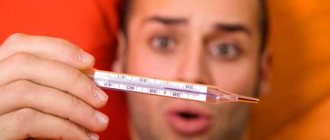One of the most commonly prescribed medications in gynecology are hormonal drugs. Hormones have a huge impact on the functioning of the female reproductive system. Violation of their normal amount often leads to negative health consequences. Duphaston is the most effective and safe drug used to correct progesterone levels in women.
Progesterone levels may be insufficient in many pathological conditions in women. A course of treatment with Duphaston should be prescribed exclusively by a doctor after a thorough examination of the body. Be sure to ask your doctor how your periods go while taking Duphaston and what regimens are available for taking this drug.
Main characteristics of the drug
The menstrual cycle in women is characterized by a complex system of hormonal regulation. Even the slightest disruption in the endocrine organs can lead to a long delay in menstruation. The active substance of the drug Duphaston is dydrogesterone - a synthetic substance, an analogue of the most important hormone for the female body, progesterone. Unlike other synthetic hormonal drugs, Duphaston for inducing menstruation has the following advantages:
- Does not affect thermoregulation
in a woman’s body: this property is very important for women practicing a natural method of contraception or calculating ovulation for successful conception. - Does not have an androgenic effect
: while taking Duphaston there is no risk of deepening the voice or the appearance of excess body hair. - Does not affect carbohydrate and fat metabolism
: a woman does not develop fat deposits on the upper body (corticoid effect). - The active substance is quickly absorbed in the small intestine
. - Duphaston tablets for menstruation do not affect the onset of ovulation
.
The mechanism of action of Duphaston is to act on special (progestin) receptors that are located in the mucous membrane of the uterus. As a result of exposure to the active substance, physiological secretory changes begin in the endometrium (provided that the level of estrogen in the body is normal). Taking Duphaston is considered quite effective and safe for women of reproductive age.
For what purpose is Duphaston prescribed?
The medical drug Duphaston is very popular today despite the fact that it is a hormonal drug. And there is an explanation for this. The fact is that duphaston is an artificial progesterone, which belongs to the latest generation, since it is obtained not from the male hormone testosterone, but from the substance dydrogesterone. Therefore, when taking it, women do not experience a change in the timbre of the head, growth of body hair and other male primary sexual characteristics. In addition, this drug is intended to normalize the menstrual cycle and maintain pregnancy, while it does not have any effect on the intrauterine development of the fetus. Based on this, it is widely used in gynecology.
One of the main tasks of the drug is to restore the cycle. Therefore, if a woman experiences disruptions and delays in menstruation due to disruption of the normal functioning of the ovaries, the doctor prescribes her a hormone. With favorable therapy, ovulation occurs in the middle of the cycle - the maturation of the egg and its release from the follicle. Then, under the influence of progesterone, the corpus luteum begins to form, and thickening of the endometrium is observed. All these natural processes in the body contribute to the fertilization of the egg by the sperm and the retention of the embryo in the first stages of development.
The drug should be taken only as prescribed by a doctor and under his supervision. The tablets are taken regardless of meals and washed down with plenty of water. The daily dosage is determined by the doctor, depending on the indications and individual characteristics of the body.
Article outline
For problems with the menstrual cycle, hormonal drugs are often used in treatment. If the problem is a lack of progesterone, then Duphaston is prescribed. This is a progesterone-based hormonal product that normalizes hormonal balance and eliminates problems with the cycle. In some cases, the situation is the other way around - after taking Duphaston, there are no periods or they are missed. To find out the reason for this phenomenon, it is necessary to initially understand the principle of action of the drug.
Scope of application
Duphaston is used not only to cause menstrual bleeding when delayed. The biological effects of the active substance dydrogesterone determine a fairly wide range of application of the drug. It is prescribed for the following pathological conditions:
- endometriosis;
- history of miscarriage;
- risk of miscarriage;
- severe premenstrual syndrome;
- dysmenorrhea;
- amenorrhea due to other gynecological diseases.
Many women know that menstruation can be induced with Duphaston, but it is better to take this drug strictly according to the indications and doctor’s prescription.
. If there are concomitant pathologies in the body, taking Duphaston on your own is strictly contraindicated.
Contraindications and possible side effects
Normal metabolism of dydrogesterone is not possible in women suffering from certain diseases of the hepatobiliary system.
Duphaston is contraindicated for women with Rotor syndrome or Dabin-Johnson syndrome. Both of these diseases are genetically determined and very rare. Also, in some cases, individual hypersensitivity to the active substance of the drug, dydrogesterone, may occur. A possible side effect during use is the development of bleeding, so it is better to take Duphaston after examination by a gynecologist.
In this case, you should immediately consult a doctor or call an ambulance.
How to induce menstruation
Menstrual irregularities for every woman should be a serious reason to contact a gynecologist.
Only a qualified doctor can determine the exact cause of delayed menstruation or the appearance of other alarming symptoms. Often the menstrual cycle is disrupted due to psycho-emotional stress or chronic fatigue and taking Duphaston is not required. In such cases, it is recommended to establish a daily routine and take sedatives based on medicinal herbs. If the cause of irregular menstruation is hormonal imbalance, then it is advisable to start therapy with hormonal drugs. The doctor must explain how to take Duphaston tablets to induce menstruation. You need to strictly follow the prescribed scheme to achieve the desired result. Irregular use of pills can lead to worsening hormonal imbalance
in the body and the appearance of headaches, irritability and increased fatigue.
Before prescribing the drug, a woman is recommended to undergo a clinical blood test, as well as check the levels of the main hormones that regulate the menstrual cycle (estrogen, progesterone). If progesterone levels are low, then begin a course of treatment with Duphaston. One tablet contains 10 mg of the active substance dydrogesterone. To induce menstruation, you should take one tablet in the morning and evening for 5 days (maximum daily dose - 20 mg). For the best effect, you need to take the tablets at the same time. When taking the drug correctly, menstrual bleeding begins within 24-48 hours.
If a woman experiences menstrual irregularities for a long time, the doctor decides on a long course of prescribing the drug. Usually the pills need to be taken for six months
. The best time to take the drug is from the 11th to the 25th day of the menstrual cycle.
Features of the drug use
Use of Duphaston for menstruation is considered safe for a woman’s health (subject to compliance with the regimen prescribed by the doctor). However, there are certain things to consider when taking these hormonal pills:
- If you become pregnant while taking the drug, then you need to gradually reduce its dosage
, since sudden withdrawal can lead to spontaneous abortion. - In some women, menstruation begins not on the 2nd day
after finishing taking the drug, but after 7-10 days. This is not considered a pathological deviation and is determined by the individual characteristics of the body. - It is undesirable to drink alcohol
, as this leads to additional stress on the liver, which metabolizes the drug. - You should not take
the drug to
change the time of the onset of menstruation
under the condition of a normal, regular cycle. Such self-medication can lead to severe hormonal imbalance. - If you are taking other medications, be sure to tell your doctor about this to avoid drug incompatibility.
Before starting treatment, read the instructions; if in doubt, ask for reviews of other patients about taking Duphaston.
The main indicator of a woman’s reproductive health is the presence of regularity in the menstrual cycle. But every woman has encountered cycle disorders and irregular periods at least once. If the cycle fails, today there is a huge selection of drugs. One of the popular means for restoring the menstrual cycle among women is Duphaston hormonal tablets. Before taking Duphaston if your period is late, you should consult a specialist.
special instructions
The medication is effective when used in situations where there is a lack of progesterone. In other cases, the selection of other drugs is required. It is not recommended to take the drug on your own; first you need to find out the source of your poor health.
Duphaston is a potent drug, like other hormonal drugs. There are a number of factors that can affect a woman’s body while taking the drug, including adverse reactions, imbalance of her own hormones, etc.
And it happens, and very often, that after taking Duphaston there are no periods.
Why is Duphaston prescribed for delayed menstruation?
If menstruation does not come for more than 7 days, then the gynecologist may prescribe the drug Duphaston. This product contains dydrogesterone, which is an analogue of the hormone progesterone. They are very similar in their properties. When such a drug enters a woman’s body, its main component begins to act actively. It causes looseness of the endometrium, the layer of which is already subject to replacement, while restoring the level of progesterone for the onset of menstruation. Hormone deficiency is often observed in women. Therefore, Duphaston for inducing menstruation is the most effective drug for delay, since it contains a hormone analogue.
When is the hormonal drug Duphaston prescribed?
Tablets are prescribed depending on the patient’s diagnosis and treatment, which is determined by the gynecologist.
Indications for use of Duphaston:
1. Insufficient amount of the hormone progesterone
Progesterone deficiency can occur in a woman:
- for infertility, which is associated with insufficient time between ovulation and the onset of menstruation (insufficiency of the secretory phase);
- in case of menstrual irregularities;
- when there is a threat of miscarriage (spontaneous abortion);
- for dysmenorrhea (painful menstruation);
- with secondary amenorrhea (no menstruation for 3 months in a row).
2. Hormone replacement therapy (HRT)
As part of HRT, the drug is used in the following cases:
- during surgical castration (bilateral orchiectomy);
- during menopause (when using estrogens, it neutralizes their effect on the lining of the uterus).
Contraindications:
- intolerance to dydrogesterone and other components in the tablets;
- with caution if itching occurs during previous pregnancy;
- not recommended during lactation, since dydrogesterone is excreted along with milk from a woman’s breast.
Use during pregnancy is possible according to indications. In case of impaired renal function, there is no data on the negative effects of the components of the drug Duphaston. A delay in menstruation may be associated with the onset of menopause. Gynecologists claim that Duphaston can normalize hormonal levels.
When to see a doctor: advice from gynecologists
Not all consequences of taking a medication require the intervention of a specialist. Most unpleasant symptoms go away on their own after one cycle. Gynecologists advise not to hesitate to contact them in the following situations:
- Absence of menstruation a week after discontinuation of the drug with a negative pregnancy test. In this case, it is important to find out the reason for the absence of menstruation and take the necessary measures. Trying to adjust your cycle by taking other medications on your own is strictly prohibited.
- Prolonged menstruation - more than a week, with heavy discharge and pain. This may be uterine bleeding, which requires medical intervention. This may also be a consequence of improperly selected treatment.
- Deterioration in general health, manifested by pain in the head, skin rash, and depression. In this situation, it will be necessary to replace Duphaston with a similar drug.
- Spotting due to menopause. When treated with Duphaston, discharge is eliminated, so their appearance indicates the presence of gynecological problems.
- The onset of menstruation in the middle of the course of taking the drug. It is important to find out the reason for this phenomenon.
- Pregnancy while taking the drug. In this case, the decision on further actions is made by the gynecologist. The drug is acceptable for use during pregnancy. However, not in all cases. If the drug is abruptly discontinued, there may be a risk of miscarriage.
Thus, any disturbances in the menstrual cycle after taking the drug require a search for the cause of the disorder, which, according to gynecologists, quite often lies in the self-prescription of the drug.
Now you know how long after taking Duphaston your period should begin.
Duphaston instructions for use for delayed menstruation
It does not matter before or after taking the drug. The doctor prescribes tablets according to the scheme individually for each patient. To do this, the gynecologist takes into account the symptoms of the disease, the phases of the menstrual cycle, excludes the presence of contraindications to the drug and conducts an analysis to determine the amount of progesterone in the body. One tablet of Duphaston contains 10 mg of the drug. It is taken orally and absorbed within 2 hours. It is completely eliminated from the body after two days.
Directions for use and dosage:
- For endometriosis - 10 mg 2 or 3 times a day, starting from days 5 to 25 of the menstrual cycle, or continuously
- For habitual abortion – 10 mg 2 times a day until the 20th week of pregnancy
- For threatened abortion - 40 mg once, then 10 mg every 8 hours until symptoms disappear (on average 1 week), after which the dosage is reduced
- For infertility - 10 mg per day from 14 to 25 days of the cycle, treatment should be carried out continuously for 3-6 monthly cycles
- For dysmenorrhea - 10 mg 2 times a day from days 5 to 25 of the cycle
- For amenorrhea - 10 mg of Duphaston 2 times a day is taken along with estrogen from days 11 to 25 of the cycle
- For dysfunctional bleeding - 10 mg 2 times a day for 5-7 days along with estrogens
- To prevent the development of bleeding - 10 mg from 11 to 25 days of the menstrual cycle
- For HRT (hormone replacement therapy) - taken together with estrogens, continuous treatment of 10 mg per day for 14 days of the monthly cycle
- For PMS - 10 mg 2 times a day from 11 to 25 days of the cycle.
Duphaston is used once or over several cycles. This remedy makes the ovulation process more active, which increases the risk of pregnancy. Therefore, it is necessary to use contraception. If pregnancy occurs, the pills should be stopped gradually to avoid miscarriage. This remedy will not cause any harm to pregnancy. Often women want to call their period ahead of time. If you take the drug for 5 days, your period will come on the second day after you stop using Duphaston. But such an action is undesirable.
Question: If you get your period while taking duphaston?
The site provides reference information for informational purposes only.
Diagnosis and treatment of diseases must be carried out under the supervision of a specialist. All drugs have contraindications. Consultation with a specialist is required! Hello! I am 27 years old and currently undergoing treatment for infertility. My main problem is late ovulation. This month, an ultrasound showed that she was on the 24th day of the cycle, after which I was prescribed Duphaston, and on the 12th day to donate blood for pregnancy. Tell me, if my period comes earlier. Does that mean there is no pregnancy? And can I stop taking it? Thank you.
You must take Duphaston in accordance with the regimen prescribed by your gynecologist. In some cases (depending on the clinical situation), the use of Duphaston may not be stopped even during menstruation, therefore, this issue should be discussed with your doctor.
Hello. I am 26 years old, I started taking duphaston as prescribed by the doctor from days 14 to 25 of my cycle. I only drank the first cycle and my period started on the 23rd day. Now I don’t know what to do, whether I need to finish drinking before day 25. When I previously drank duphaston from day 11, this did not happen. What to do in such a situation? I will be glad if you help. Thank you in advance.
Typically, Duphaston is used exactly from the 14th to 25th day of the menstrual cycle, but if your menstrual cycle is shorter than 28 days, the drug regimen can be adjusted. To clarify the situation, a personal consultation with your attending gynecologist is necessary. You can read more about the drug Duphaston, indications and contraindications for its use, as well as about the treatment regimens used in our thematic section of the same name: Duphaston.
Hello! I had a delay of about 4 weeks, the doctor diagnosed ovarian dysfunction and prescribed dufastol. He said that after 10 days menstruation would begin, but it began on the second day. The question is whether I should continue taking the pills or not. I somehow didn’t clarify this question with the doctor, because... I encountered dysfunction for the first time.
In this situation, you may not continue taking Duphaston, but after the end of menstruation, personally visit a gynecologist to conduct a comprehensive examination and prescribe adequate treatment. You need to do a blood test for sex hormones, an ultrasound of the pelvic organs, and a smear test. You can get more detailed information on the issue you are interested in in the corresponding section of our website by clicking on the following link: Hormonal disorders. You can also get additional information in the following section of our website: Hormonal tests
Hello! I had an endometrial polyp removed on the 13th day of the cycle, and from the 20th day I was prescribed Duphaston for 10 days. They told me to drink until my period, and then continue and from the middle of the next cycle take Cyclodinone with it, then do an ultrasound. On the 8th day of taking Duphaston (28th day of the cycle), my period began. I can’t figure out how to continue taking Duphaston. Finish these two days? And when to start again? Immediately after menstruation or from the middle of the cycle along with Cyclodinine? Or not stop at all, but continue during menstruation and immediately after? But the recipe definitely says 10 days. And she told me that I could drink it (duphaston) all the time. I don't understand what she meant. I want to get pregnant quickly. Help, please, otherwise I can’t get through to her, and, at best, I’ll get an appointment in a week. Thank you.
Side effects of hormonal drugs
Before you start using the tablets, you need to familiarize yourself with the side effects.
These include:
- abdominal pain during menstruation;
- migraine, headache;
- chest pain during menstruation;
- weakness, malaise;
- heavy periods;
- skin itching, rashes;
- hypersensitivity;
- liver dysfunction;
- breakthrough bleeding.
This bleeding can be eliminated by increasing the dosage of the drug. There is no information about an overdose of Duphaston. But if the dose of the drug has been much exceeded, it is necessary to perform gastric lavage and only then carry out indicative therapy.
Release form and storage conditions of tablets
The drug is available in the form of round tablets, 20 tablets of 10 mg each in a blister, in a cardboard package. Should be stored at room temperature not exceeding 30°C, protected from direct sunlight, out of the reach of children. The shelf life of the drug is 5 years. The instructions contained in the package are for reference only. The drug should be taken only as directed by your doctor. Dispensed only with a doctor's prescription. The price depends on the region, the average price is 530 rubles.
This hormonal remedy is a relatively inexpensive option and is effective for late periods. Helps quickly restore a woman's menstrual cycle.
You need to treat your health with care and monitor changes in the body. You should not self-medicate in such cases, as this can lead to serious consequences.
There is a situation in every woman's life when it is necessary to induce menstruation. This is often necessary before a vacation, planned surgery, or in case of a long delay. In our article we will try to figure out how, when and to whom the procedure for provoking menstruation is indicated.
When is it possible to induce menstruation?
In the case of regular delays in menstruation, constantly artificially provoking their onset is illiterate and even criminal. Such an irregular cycle may hide serious endocrine diseases: hypothyroidism, pituitary prolactinoma, adrenal tumors and others. To clarify the reasons for such an irregular cycle, it is necessary:
- Donate blood for thyroid, adrenal and sex hormones.
- Check blood sugar levels and glucose tolerance levels.
- Perform an ultrasound examination of the thyroid gland and pelvis, and sometimes the abdominal organs.
- Monitor the presence of ovulation using special tests, basal temperature or ultrasound.
Constantly prescribing medications to such patients and, without understanding the reason for the absence of normal menstruation, inducing menstruation is an indicator of the indifference and illiteracy of the attending physician.
The use of special medications is justified in the case of a one-time delay in a gynecologically healthy patient. Such delays can occur due to stress or climate change. In some cases, it is permissible to wait one or two weeks, perform a pelvic ultrasound, assess the condition of the ovaries and endometrium, and only then prescribe drugs to provoke a menstrual reaction.
It is important to understand that the only proven group of medications that can in some cases cause delayed menstruation are gestagens and gestagen-like drugs. Today we will talk about Duphaston as the safest and most widely used to provoke a menstrual reaction.
How does Duphaston “work” to induce menstruation?
Duphaston with its active ingredient dydrogesterone belongs to the group of synthetic gestagens. Other gestagen-like drugs (Norkolut, Mikronor) and natural gestagens (Utrozhestan, Crinon, Susten) have a similar effect regarding the menstrual cycle.
The main tasks of gestagens:
- The transition of the uterine mucosa from the proliferation phase (that is, active growth) to the secretion phase (that is, the accumulation of nutrients in it).
- Germination of the endometrium by vessels.
- Decreased contractility of the uterine muscle.
- Production of mucus in the cervical canal and formation of a cervical mucus plug.
- To some extent, depending on a particular drug and dosage, blocking the ovulation process.
It is logical to assume that Duphaston and his “relatives” will be able to induce menstruation only if, during the delay, there was a deficiency of the natural gestagen - progesterone.
Such a deficiency occurs in the following cases:
- Lack of ovulation: one-time in a given cycle or its chronic absence. The first situation occurs in every healthy woman once or twice a year. Chronic anovulation requires careful examination and treatment.
- Persistence of the follicle or follicular cyst. It often happens that the follicle grew, but ovulation did not occur for one reason or another. The former follicle froze at a certain stage of development and turned into a cystic ovarian formation. For the reverse development of this cyst, progesterone is necessary, and its level is low, since ovulation has not occurred. It is this vicious circle that helps to break the introduction of gestagens from the outside.
- Luteal phase deficiency or absolute deficiency of progesterone. With a lack of its own gestagens, the uterine mucosa cannot move into the second phase and be rejected.
When can you not induce menstruation with Duphaston?
Like any drug, Duphaston has a number of contraindications:
- Allergic reaction
- Mentions of skin itching, especially a history of pregnancy dermatitis.
- Liver diseases. In addition to absolute contraindications, there are situations where harm
Duphaston will not cause harm, however, it will not provoke menstruation:
- Pregnancy.
- Conditions associated with estrogen deficiency, such as menopause or lazy ovarian syndrome.
- Endometrial insufficiency.
How to take the drug?
Duphaston is sold in pharmacies strictly according to prescription, and only a doctor can prescribe this or that regimen. The drug has contraindications and a number of unpleasant side effects, so self-medication is absolutely unacceptable! To provoke a menstrual reaction, Duphaston is usually taken 1 tablet twice a day for 10 days. After this, the pills are discontinued, and menstruation occurs within 3-10 days. If your period does not come within the specified period, you need to see a doctor for a re-examination and tests.
Alexandra Pechkovskaya, obstetrician-gynecologist, especially for the site
Useful video:
Menstrual irregularities are a common problem in gynecology. If there is a delay of just a couple of days, you should not resort to radical methods, because a number of factors can provoke it: from stress at work to a common cold. But if the absence of menstruation has become chronic, or if there is a delay of more than 10-14 days, doctors will advise you to undergo therapy with hormonal drugs. One of the most effective is Duphaston. In this article we will tell you how to induce menstruation with Duphaston and what not to do.
When should I expect my period after stopping the drug?
Quite often, gynecologists note that patients ask the following question: “I took Duphaston, why do I have a delay after stopping it, and my periods do not start?”
In the female body, the level of progesterone, which is produced by the corpus luteum, drops sharply. In this case, progesterone is produced with the support of Duphaston.
When a hormone is low, it gives a signal to the body that it is not enough. The endometrium no longer holds anything, it begins to peel off from the walls of the uterus and comes out with blood discharge.
Menstruation occurs after discontinuation of the drug for 2-3 days.
Quite rarely, but they can also begin on the tenth day, but this is already a deviation from the norm.
In such a situation, there may be two sides to the coin:
- improper and uncontrolled treatment with Duphaston;
- pregnancy.
There are often cases when, after finishing taking Duphaston, the delay continues and menstruation does not occur.
In such a situation, a delay can often indicate the presence of pregnancy. It is recommended to undergo a jet test to determine pregnancy. Also, you should not stop taking the drug, because after discontinuation the hormone level drops sharply and a spontaneous miscarriage may occur. Gynecologists advise stopping gradually, up to taking half a tablet.
With amenorrhea of the second type, a delay occurs, which is caused by destabilization of the ovaries, so Duphaston can be used. In such a situation, therapy lasts a long time over several cycles in a row. When this condition occurs, the ovulation phase does not occur, and in turn, the drug has a positive effect on the functioning of the ovaries and restores the cycle, which gives a greater chance of a favorable conception.
If a woman does not plan to conceive during this period, then do not forget about birth control methods. And it is better to consult a doctor to choose the best option in such a situation.
How Duphaston affects the female body
The absence of menstruation is caused by a lack of progesterone, the hormone through which ovulation occurs. Duphaston is a synthetic progesterone substitute. The active ingredient in it is dydrogesterone. One tablet contains 10 mg of the substance.
There are a number of similar drugs, but in comparison with analogues, Duphaston has an inherent advantage: it does not convert into estrogen and does not have a corresponding effect on reproductive function. Dydrogesterone does not belong to the category of testosterone derivatives. Therefore, it does not have the typical side effects (that is, cases when increased hairiness appears, the voice becomes rougher).
When taking the drug, sudden changes in metabolic processes are excluded, there is no increase in temperature. Therefore, during a period of such hormonal silence, the effectiveness of determining ovulation by measuring basal temperature remains. Also, Duphaston does not increase (or increases to the slightest extent) the endometrium of the uterine cavity.
Indications for taking Duphaston
The most common reason why Duphaston is prescribed is the absence of menstruation.
But normalization of the cycle is already, one might say, a secondary result, a consequence. The primary reasons why menstruation does not occur and which Duphaston treats include:
- Difficulties due to operations on the uterus
. Hormone therapy is a reliable way to help adapt to changes in hormonal levels. - Acute estrogen deficiency
. Because of this pathology, there are often cases of prolonged delays in menstruation, miscarriages, and dysmenorrhea. Duphaston normalizes the concentration of the hormone and relieves the consequences.
In addition to the fact that Duphaston can induce menstruation, the drug is also used for other disorders of the female body:
- Treatment of endometriosis;
- Treatment of infertility caused by insufficiency of the second (luteal) phase;
- Relief from PMS symptoms;
- Stabilization of the menstrual cycle, including delays;
- Auxiliary drug for amenorrhea.
Depending on the purpose of taking the medicine, the daily dosage and duration of use are determined.
Lack of menstruation: reasons
After treatment with medication, a delay in the arrival of menstruation is quite often observed. It is this factor that causes some concern among women. The regularity of the cycle is an indicator of the state of women's health, so any changes force the patient to consult a doctor.
So, after taking Duphaston there are no periods - what does this mean? There are quite a few reasons why your period comes outside of its due date. Therefore, at the initial stage of diagnosis, it is important to determine the factor that influenced such a failure. A correct diagnosis will allow you to prescribe the correct treatment.
What are your periods after taking Duphaston? There are cases when a delay in menstruation is not an indicator of problems in the body, but simply represents a short pause. In the vast majority of cases, menstruation begins a few days later, and its duration can reach one week. This is considered normal and should not cause concern. A state of stress can increase this period several times, so it is important to calm down and be patient.
If after taking Duphaston there are no periods for several weeks after discontinuation, this may indicate a deviation from the norm or pregnancy.
Routes of administration and dosage regimens
If you have been prescribed to take Duphaston to induce menstruation, then this should only be done orally (by mouth). The composition of the drug is quite balanced, it is perfectly absorbed into the blood through the walls of the gastrointestinal tract, and already 1-1.5 hours after administration it begins to interact with plasma protein.
The drug leaves the body three days after administration, along with urine. There were no cases of overdose or excessive accumulation even in women with kidney problems.
Under no circumstances should you take higher dosage pills in hopes of getting your period faster.
Reception should be regular, in small doses, at regular intervals. If there is a delay, this approach will help balance the concentration of progesterone in the blood and quickly rid the body of pathologies.
Dosages do not depend on the woman’s weight and age, but in each specific case they are selected individually, depending on the type and degree of the problem.
However, you cannot start taking hormonal medications on your own.
You need to go to the doctor and get a prescription, because the wrong choice and dosage can only worsen the problem.
In what cases is Duphaston prescribed?
The main component of the drug is a special substance – dydrogesterone. This is a synthetic hormone that acts similarly to natural progesterone. Dydrogesterone helps reduce the excitability and contractility of the muscles of the uterus and fallopian tubes.
In case of disturbances in the functioning of the ovaries and changes in the cycle, Duphaston may be prescribed
Since the action of the substance is in many ways similar to the action of a natural hormone, it is prescribed in the following cases:
- Ovarian dysfunction. Ovarian dysfunction manifests itself through scanty periods and cycle failure.
- Severe pain, increased body temperature during PMS. It is normal to feel slightly unwell during PMS. If a woman’s health deteriorates so much that it becomes difficult for her to carry out normal daily activities, she should be examined to identify the cause.
- Irregular menstrual cycle. It manifests itself through frequent periods or too long a cycle. On what day after taking Duphaston menstruation begins largely depends on the state of the woman’s reproductive system as a whole.
- Endometriosis. A gynecological disease, a characteristic feature of which is the proliferation of endometrial cells beyond the inner layer of the uterine walls.
- Treatment of uterine bleeding. The appearance of bleeding that is not menstruation requires additional examination by a gynecologist.
- Infertility. Treatment with the drug shows good results if the nature of infertility is associated with estrogen deficiency.
Similar article - Facultative anaerobic flora is
In each of these diseases, to one degree or another, there is a deficiency of the natural hormone progesterone. If the disease was caused precisely by a deficiency of the hormone, then Duphaston will be an excellent remedy for replenishing the deficiency. If the disease occurs for another reason, a completely different treatment is prescribed. Therefore, the diagnosis and determination of the causes of the disease must be clarified by the doctor. Self-medication without knowing an accurate diagnosis poses a danger to human health.
Duphaston is prescribed to the fair sex at the preparatory stage before pregnancy if there have been previous miscarriages. Experts prescribe treatment with the drug for pregnant women if there is a threat of pregnancy failure and its premature termination. The drug can be prescribed either as part of complex therapy or independently.
How to take Duphaston to induce menstruation
The main question that arises with this drug is: how to take Duphaston to properly induce menstruation.
Only a doctor will give an exact answer after examining you and passing the necessary tests in your case. This is the only way to see the full picture of the processes in the body and make a decision on how to induce menstruation.
The treatment plan is determined by the doctor. It depends on the hormonal state of the patient, and on how often she sought the help of a doctor. The following options are possible:
- In most cases, when there is a delay of more than 8 days, Duphaston is prescribed for 10 days of admission. For severe uterine bleeding that occurs at the beginning of the cycle or at the very end, the drug is prescribed for a maximum of 5 days.
- If you have had a period failure caused by some external factor and hormonal imbalance, and you need to stimulate them, you need to start drinking Duphaston at the beginning of the second half of the menstrual cycle, that is, from 12 to 15 days. If you follow the required dosage and recommendations, your period will most likely begin on the 4th or 5th day from the first day of use (a similar effect is observed in 80% of women).
- In case of hormonal deficiency, a woman must undergo a full course of treatment; its duration can reach 6-9 months. But with such a long-term use of an artificial hormone substitute, the opposite effect is observed: after some time, the body gets used to the constant maintenance of progesterone and stops producing it on its own. Therefore, it is better to take Duphaston on an ongoing basis for no longer than 2-3 months, after which you must take a break.
If you immediately saw the effect, your periods began to go regularly, you cannot immediately completely abandon Duphaston - this causes repeated long delays or, on the contrary, severe bleeding. Just gradually reduce the dosage, over time the body adapts, the hormonal levels stabilize and the drug will no longer be needed.
Duphaston and menstruation
Many women are interested in the question of how duphaston affects menstruation. The drug, being a synthetic progesterone, performs the function of this hormone. Quite often there are situations when, under the influence of external factors or somatic problems, its level in the patient’s blood drops. This usually leads to a malfunction of the entire reproductive system, especially the menstrual cycle.
Progesterone is the trigger for ovulation and menstrual bleeding. The drug compensates for its deficiency quite easily. Many women note that without duphaston their periods do not come. The subtlety of this situation is that progesterone actively begins to work precisely in the second phase of the menstrual cycle.
It is known that this hormone is responsible for preparing the place in the uterus where the egg should attach. It also stimulates the removal of the endometrium from the female body if the process of conception has not occurred. Duphaston performs the functions of progesterone, but this drug cannot completely replace the natural organic hormone.
“I drank duphaston, but my period didn’t come” - such reproaches are often heard by antenatal clinic workers. A synthetic substance can cause disruption of the menstrual cycle due to its heterogeneity with the woman’s body.
“When taking Duphaston, menstruation began earlier” - this scenario is also possible. A woman must understand that synthetic hormonal drugs are not a panacea.
Quite often in the life of any patient a situation occurs when, even despite taking this drug, monthly bleeding does not occur. Since a woman often does not regularly monitor her cycle, she has a fair question: “Can duphaston cause a delay in menstruation?” As noted above, this drug only copies the action of progesterone and is responsible for the success of the second phase of the ovulatory cycle. Using it to stimulate menstruation cannot cause a reverse reaction due to its chemical and physiological properties.
Quite often, after taking this substance, a delay in menstruation develops into pregnancy. In this case, you can stop taking duphaston, or you can continue, but only after consulting with your doctor. This medicine is not capable of causing spontaneous abortion, does not threaten the course of pregnancy, and even promotes pregnancy by maintaining the level of progesterone in the woman’s body.
Brief recommendations for taking the drug to stimulate menstruation
If a woman is interested in the question of how to take duphaston when her period is late, it is advisable for her not to waste her time communicating on social networks, but to seek advice from a gynecologist. Only a specialist can calculate an acceptable dose of the drug, and he is based on the examination and tests of the patient, and does not guess “from the tea leaves.”
To stimulate menstruation, duphaston should be taken in the second half of the menstrual cycle from 12 to 15 days. If the question arises, how many days does it take for menstruation to come, we can satisfy such curiosity. Typically, in 80% of cases, menstruation begins 4–5 days after the first dose of the drug.
The course of treatment for female hormonal deficiency can last up to 7 - 9 months. But if you drink duphaston continuously, the level of progesterone in a woman’s blood ceases to recover on its own. Therefore, the course of treatment for such a pathology does not exceed 2 - 3 months.
If the patient’s condition has stabilized and the menstrual cycle has returned to normal, the use of the drug should not be stopped immediately. The dosage is reduced gradually; with abrupt withdrawal, prolonged delays in menstruation or heavy bleeding are possible. If duphaston is not discontinued, the woman’s hormonal levels will return to normal on their own; she will only need maintenance therapy in the future.
The treatment regimen prescribed by a specialist depends on the patient’s condition, her hormonal levels and the frequency of visits to the doctor. Usually, if menstruation is delayed for more than 8 days, duphaston is given to the patient for 10 days. Severe bleeding from the uterine cavity at the end or middle of the cycle also responds well to treatment with this drug. The maximum period of use for such pathology is 5 days.
A synthetic progesterone substitute is widely used in obstetrics and gynecology to prevent miscarriages during desired pregnancies. It is usually prescribed up to the 5th month of gestation and is subsequently replaced with more complex and effective drugs.
The medical literature has published data that it is the lack of progesterone in a woman’s blood that causes spontaneous abortion in 80% of cases. Duphaston is the drug of choice in this situation, despite its possible side effects.
Side effects of Duphaston and contraindications
Like every other hormonal drug, you need to be extremely careful when taking Duphaston. It has much fewer side effects compared to other progesterone substitutes, but is by no means completely free of them. The following cases occur:
- A small proportion of women who take the drug note such unpleasant symptoms caused by it: abdominal pain during menstruation, there are cases of dizziness, frequent headaches and similar neurological disorders.
- Stimulating menstruation with Duphaston leads to heavy discharge in approximately 10-12% of cases. The reason for this is the rather ambiguous effect of the active substance on the mucous membrane and epithelium of the uterus. Indeed, the drug practically does not increase the epithelial layer, but this indicator is very individual.
- Due to the active growth of the hormone progesterone in the blood, women may experience pulling, painful sensations in the breasts during menstruation. Due to the retention of excess fluid in the tissues, the mammary glands can become greatly enlarged while taking Duphaston.
- The possibility of allergic reactions cannot be completely denied. Due to the active substance, high fever, moderate nausea, and possible rashes on the woman’s skin may occur.
Contraindications for taking Duphaston are actually the same as for other drugs:
- Pregnancy
. Before you start taking the medicine, do a follow-up test to make sure you are not pregnant. Even in the early stages, a surge in the hormone can negatively affect the course of pregnancy (except in cases where the doctor prescribed it for a lack of progesterone for normal childbearing). If, with the onset of pregnancy, you have been taking Duphaston for some time, you should not suddenly give it up - just gradually reduce the dose. - When breastfeeding.
Opinions on this matter are contradictory, but the fact remains: the artificial hormone passes into the mother's milk and is passed on to the child. This is an unsafe process. - Combination with alcohol.
There are no direct contraindications to taking Duphaston with alcoholic beverages. But due to the effects of alcohol on the body, the drug may be less absorbed and eliminated faster, thereby becoming less effective. Therefore, it is advisable not to combine them. If you cannot avoid drinking alcoholic beverages, try to drink them no less than 2 hours after taking Duphaston.
The drug has proven effective in the treatment of gynecological pathologies. But you cannot self-prescribe hormone therapy and resort to taking it. An incorrect regimen or missed contraindications can cause complications in the functioning of the endocrine system. Agree on the need for Duphaston and its dosage with your doctor.
Changes in the menstrual cycle while taking Duphaston
Despite the fact that the effect of the drug is aimed at regulating the menstrual cycle, in some cases women note fluctuations in the timing of the onset of menstrual periods and in the nature of bleeding at this time. This may be due to various factors.
Absence on time
The most common complaint from women when taking Duphaston is the lack of menstruation on time. Typically, bleeding begins within three days to a week after stopping the drug, and if your period has not started, you should consult a doctor to determine the cause of the delay.
Similar article - Is it possible to eat an apple at night?
Sometimes the absence of bleeding at the expected time is due to external factors, for example, climate change, long flights, emotional stress, excessive physical exertion.
The main reasons for the delay of critical days while taking Duphaston include the following:
- Pregnancy. After taking Duphaston, hormonal balance can be restored quite quickly, and with normal progesterone levels in the luteal phase of the cycle, a successful pregnancy is possible.
Often, in a short period of time, tests can show a negative result, so they need to be carried out several times, and also donate blood for hCG to confirm successful conception.
If pregnancy is confirmed, the woman should continue taking the drug, as it promotes the normal course of pregnancy and prevents its termination in the early stages.
- Uncontrolled use of the drug. Often women, knowing about Duphaston’s ability to influence the onset of menstrual periods, drink it in order to delay the onset of bleeding, for example, during a planned trip to the sea or before some important events. Since menstruation occurs within 3-4 days after taking the drug, you can quite accurately calculate at what time there will be no bleeding.
- Misdiagnosis. This situation can arise if a woman’s hormonal status is not fully examined and she complains of an irregular menstrual cycle and infertility. Duphaston is indicated for use only when progesterone levels are low in the second phase of the cycle; if the patient has other problems with the endocrine system, the drug may be ineffective, which will lead to a delay in menstruation.
Hormones in different phases of the menstrual cycle are normal
- Abrupt withdrawal of medication. This is usually typical for women who take the drug without a doctor’s prescription in order to normalize the menstrual cycle. After the critical days begin on time in 1-2 cycles, they stop drinking Duphaston, believing that all problems have been solved. However, the body cannot cope with a sudden change in hormonal balance, since adaptation requires a gradual reduction in dosage.
According to the recommended treatment regimen, the daily dose should be reduced to zero over several weeks or months, otherwise the menstrual cycle will be disrupted again and menstruation will be delayed.
- Disorders of other organs of the endocrine system. If there are problems with the synthesis of hormones by the thyroid gland, adrenal glands and other endocrine glands, an additional dose of progesterone can cause a malfunction in their work and disrupt the menstrual cycle.
- Late ovulation. If the body produces a sufficiently large amount of progesterone, an additional dose of a synthetic analogue can lead to a delay in the maturation of the egg in the follicle. Exceeding the concentration of progesterone in the blood also increases the duration of the luteal phase and the process of endometrial renewal, which leads to a delay of critical days by more than a week.
A delay in menstruation while taking Duphaston is a reason for mandatory consultation with a doctor, since this may indicate that the treatment is ineffective and a change in drug or clarification of the diagnosis is required.
To find out why there are no periods after taking Duphaston, watch this video:
Early start
Another type of deviation from the normal course of menstruation after taking Duphaston is the premature arrival of menstrual periods. This phenomenon may be due to the following factors:
- Individual reaction of the reproductive system organs to the drug. In this case, the early onset of menstruation is not a pathology, but just a mild side effect, of course, provided that the dosage and regimen of the drug are not violated.
- Incorrectly calculated dose of the drug. Early menstruation may be caused by too low a concentration of the total amount of your own progesterone and that received with Duphaston. In this case, the doctor may recommend increasing the daily dose of the drug, and in the next cycle the critical days will begin at the scheduled time.
- Violation of the medication regimen recommended by the doctor. Depending on the nature of the hormonal imbalance, Duphaston may be recommended for use in different phases of the menstrual cycle, and depending on this, the expected start date of menstrual periods is determined. If a woman does not comply with the prescribed therapy regimen, menstruation may begin earlier than expected.
Painful and heavy periods
Hormonal drugs, including Duphaston, affect not only the onset of menstruation, but also the nature of the discharge during it. One of the side effects of taking the drug is increased bleeding during menstruation, which is accompanied by severe pain.
The increase in the intensity of discharge during menstruation while taking Duphaston is due to its effect on the growth of the endometrium. By the end of the menstrual cycle, the uterus should be prepared for the possible consolidation of the fertilized egg. With the active influence of progesterone, the endometrium becomes denser and expanded, so in the absence of pregnancy, there is more tissue being rejected, which causes increased bleeding.
Usually, when taking progesterone, your periods will be heavier than usual.
This process also increases the duration of bleeding, which is also associated with a large amount of rejected endometrial tissue accumulated in the uterus.
Such phenomena indicate two factors:
- the body exhibits an individual reaction to taking Duphaston;
- the therapeutic effect was not achieved, so it is necessary to develop a different treatment regimen and use other drugs.
Another unpleasant consequence of taking Duphaston is severe pain during menstruation. But this phenomenon is not always caused by changes in hormonal levels, but rather by the underlying disease for which the drug was prescribed.











